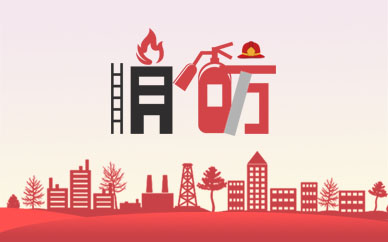
CISH Group 4 Science Project
 (资料图片仅供参考)
(资料图片仅供参考)
CISH
TheGroup 4 projectis a collaborative activity where students from different Group 4 subjects work together on a scientific or technological topic, allowing for concepts and perceptions from across the disciplines to be shared in line with aim 10—that is, to “develop an understanding of the relationships between scientific disciplines and their influence on other areas of knowledge”. The project can be practically or theoretically based. Collaboration between schools in different regions is encouraged. The G4 project allows students to appreciate the environmental, social, and ethical implications of science and technology. It may also allow them tounderstand the limitations of scientific study, for example, the shortage of appropriate data and/or the lack of resources. The emphasis is on interdisciplinary cooperation and the processes involved in scientific investigation, rather than the products of such investigation. The choice of scientific or technological topic is open but the project should clearly address aims 7, 8, and 10 of the group 4 subject guides (DP Biology Guide 2016).
Group 1 - by Henry Bai
Biosphere 2 is a world-renowned NASA project that aims to create a self-sustaining microcosm, a closed system where the only transfer is energy. However, such ambitious endeavors come with drawbacks and limitations. Our team has tackled 2 main limitations to propose a feasible and actionable solution. We researched coatings to apply, with the aim of preventing concrete from cracking and lowering its moisture in order to lower its reactivity to our environment and its surrounding gases including oxygen and carbon, elements that are imperative for the mutual, self-sustaining relationship between plants and consumers where photosynthesis and respiration function in tandem cyclically. Secondly, we"ve researched the absorption spectra of glass panes to decide on and select the most suitable tints and pigments for glass. This is one of the underlying problems with glass"s high reflectivity for our habitat. So, we chose blue and red as our main solutions to maximize light access for our producers. With consideration of energy, another approach inspired by mathematics was our application of parabolic mirrors to centralize all of our sun rays.This was to deflect them all and concentrate them on the central region of our habitat. In a nutshell, this concludes the main solutions that our project has embarked on to resolve. This is in order for a more self-sustaining infrastructure for future terrestrial habitats to reference. Overall, this was a wonderful 3-day endeavor that ended our school year on a high note. It was an opportunity for us to use up all of our remaining bursts of energy to fully optimize our learning experience.
Group 2- by Harold Heo
Title: From Engine to Motors
Team Members: Harold, Sean, John, and Henry.
Approximately 5.6 tons of carbon dioxide are produced per vehicle manufactured. 75% of this carbon dioxide is emitted from the steel chassis and the paint that covers its chassis. Our Group 4 Project was about investigating and evaluating this eco-friendly transition from the perspective of Chemistry, Physics, Environmental Science, and Computer Science. Is there a way to recycle these painted steel chassis and convert gasoline vehicles to electric ones? This will prevent environmental harm caused by both the production and use of these vehicles.
Group 3- by Martin Sulik
Title: Students" vitamin consumption Research question: What are the effects of vitamins on a high school student"s mental and physical health? How can vitamins ensure good mental and physical health?
Our project aimed to investigate the effects of vitamins on high school students" mental and physical health. By integrating knowledge from Biology, Chemistry, Sport Science, and Computer Science, we conducted a comprehensive analysis to understand the impact of vitamin intake on students" well-being. Throughout our research, we examined various vitamins and their effects on mental and physical health. Among the vitamins studied, B vitamins had the most significant influence on mental health. However, it is worthwhile to note that all vitamins have their own benefits and drawbacks. Our research highlighted the importance of vitamins in quantities. Vitamin intake can be achieved through a healthy and balanced diet. This includes a variety of meals with vegetables, fruits, and other nutrient-rich sources. By leveraging the disciplines of Biology, Chemistry, Sport Science, and Computer Science, we gathered data related to vitamin intake, mental health indicators, and physical well-being. Our findings underscored the importance of understanding vitamins" role in maintaining good mental and physical health among high school students. In conclusion, our project emphasized the significance of vitamins, particularly B vitamins, in promoting positive mental health. We also highlighted the importance of a well-rounded diet to ensure the appropriate intake of vitamins. By shedding light on the effects of vitamins on high school students" mental and physical health, we hope to contribute to the broader understanding of how nutrition impacts overall well-being in educational settings.
Group 4- by Emily Lee
Group number 4, consisting of Manolo, Emily, Ailee, and Sunshine, examined a real-world issue of volcanic activity through this project. Each was responsible for different science areas. Sunshine handled chemistry, Emily took biology, Ailee"s in Environmental systems and societies, and Manolo"s in Sports, exercise, and health science. As a team, we investigated and analyzed what volcanic activity is, how it occurs, and what impacts it causes. We also investigated how and why it happens in various fields.
For us to explore it in more detail, we chose one of the most representative impacts of volcanic activity, volcanic ash. We researched that in each of the four scientific fields. Moreover, for us to make a deeper exploration and a clear connection with the real world, we chose the most active volcano in the Philippines, called Mayon Volcano. In the process of selecting and investigating the actual volcano, we once again realized that problems affecting both the environment and humans still exist and are serious. As we looked into its actual solutions, we also found that many real-world issues can"t be solved with science. Through this, all of our team members had questions about 5W and 1H. What is it?When? And why did it happen, who"s involved in this case, and how can it be stopped or solved? By making deep considerations, questioning ourselves, and realizing the connection between science and our world, we collectively achieved the purpose of the Group 4 project. We developed it again. This project also improves students" communication and teamwork skills. Our group has naturally developed by coordinating large and small tasks through consultation between members. We also shared each other"s research knowledge, ideas, and thoughts.
Even though we worked together through communication, the difficulty we had during the project was related to teamwork. It wasn"t easy to organize everything from start to end, mostly because we didn"t have that much experience taking on long-term projects. It took us a day to set a topic and research direction. It took another day to find relevant research data, understand it, and then explain it to each other. On the last day, we put our work on a whiteboard and presented it to all the teachers. At the end of the project, we realized that although all the difficulties we had were related to teamwork, solving them was also through teamwork.
In the Group 4 project, we"ve done so many things together that it feels like three days are short, and we"ve faithfully fulfilled our roles. In that process, we"ve acquired communication and teamwork skills, but also patience, insight, and dedicated work skills.
Group 5- by Cindy Liu
Cooum River: Water Pollution and Solutions
Water pollution is a raging environmental issue that affects aquatic ecosystems, organisms, and even humans worldwide. The Cooum River, located in Chennai, India, is one such ecosystem heavily impacted by water pollution. Pollutants such as plastic waste, chemicals, and untreated sewage liquids have made the river unsuitable for many organisms.
Our project focuses on understanding the extent of water pollution"s impact on the ecosystem, and what measures can be taken to resolve the issue. Our group members are Cindy Liu, Barry Bai, Sharon Wu, and Anna Yao. Our project brings together the fields of Biology, Physics, Chemistry, and Environmental Systems and Societies (ESS) in order to develop a comprehensive understanding of the problem and potential solutions. Through this interdisciplinary approach, we created a prototype for a water filtration system. This was to aid the growth and development of organisms depending on the Cooum River for survival. This prototype can be easily made from common materials and developed and industrialized by the Indian government. This will promote the Cooum River"s sustainability. This system may resolve different problems within these four subjects, like increasing dissolved oxygen levels, surface tension, photosynthesis rates, organism population, etc. Plastic waste, chemical waste, and oil spills are among the major contributors to this pollution. Effective measures such as the use of this water filtration system can be taken to reduce waterpollution in the Cooum River. This prototype water filter using biochar, rocks, sand, and charcoal can provide clean water by filtering out impurities. By taking action to mitigate water pollution"s negative impacts, we can promote sustainability and preserve our ecosystems for future generations.
Group 6 - by Michael Shi
For our Group 4 Project, we have designed a product centered around tackling the hygiene issues faced by the female population of menstrual age within rural communities in India. Since we have recognized discrepancies between urban and rural life quality and method, a factor of focus has been identified as menstrual products. Therefore, the center point for this project in terms of our group is developing a menstrual pad better suited to the needs of these aforementioned women. Throughout the planning process, we managed to integrate all four subjects, Biology, Chemistry, ESS, and Computer Science into the core of the developmentscheme. Overall, this has been a fruitful experience that has successfully cultivated an ability to interconnect scientific concepts among students of different course areas.
Group 7 - by Harry Kim
For our group 4 project, we decided to research artificial gravity and space farming. Throughout the project, we had a very meaningful experience exploring how such random topics can come together. We also explored how they could be explained in the areas of science we have explored. As we assembled our personal findings, it felt like we were matching a puzzle set together. This certainly was an interesting journey. It was also a blast to build effective models showcasing our learning and going through multiple iterations to complete them. There were multiple obstacles, even when we chose our topic, which dragged our processes longer than expected. I do agree with you that, overall, it was a very meaningful process to cooperate and draw together what we have learned individually into an interesting topic in a joint effort.
CISHGroup4ScienceProjectCISHTheGroup4projectisacolla
6月28日华北苯酐市场价格走势暂稳,场内邻苯法苯酐主流报价为7600-7700
1、如果不是专业人士,可能还不明什么是网络打印机。2、一、通常,大家
6月28日,浙江蓝苏氟化工氢氟酸装置一条线运行平稳,厂家库存低位,厂
6月28日内蒙古地区氢氟酸市场行情暂稳,目前无水氢氟酸出厂含税价格主
6月28日陕西兴化化学股份有限公司硝酸铵装置正常运行,厂家出厂价格为5
黄沙戈壁,落日孤烟,在新疆石油勘探一线,这一切对邓尚来说习以为常。
hello大家好,我是大学网网小航来为大家解答以上问题,儿童折纸简单又
企查查APP显示,平顶山数字智能产业运营有限公司成立,注册资本1亿元,
6月27日,浙江省委改革办常务副主任金晓明到华海制药科技产业园调研医
二手房面签是什么意思?二手房面签就是指借款人携带上个人有效身份证和相关文件,前往贷款银行缴纳贷款所需费用,并进行面谈及签字的手续。
缴纳社保后多久能查到?当月缴纳的社保,一般在次月底或者次月初就可以查到,参保人可以通过登陆当地社保网查询;或者是去当地社保局查询;还
社保卡可以当工资卡使用吗?社保卡可以当工资卡使用,现在的社保卡是有金融功能的,可以当银行卡使用,如果有社保卡,就可以不用再去银行办
社保卡可以存钱吗?如果是旧式的社保卡是不可以存钱的,他只能用于看病买药,如果是新式的社保卡,是可以存钱的,新式的社保卡增加了金融功
中证500有哪些股票?中证500指数由全部A股中剔除沪深300指数成份股及总市值排名前300名的股票后,总市值排名靠前的500只股票组成,综合反映
新华社北京6月27日电人力资源社会保障部部长王晓萍27日分别对湖南、广
华通线缆6月27日公告,上交所上市委于6月26日召开2023年第56次审议会议
建行储蓄卡年费多少钱?一般来说,是10元每卡每年。当然,特殊种类的卡片,其年费会更高一些。举个例子,陆港通龙卡50元 年 卡,VISA姚明珍
重疾险可以抵扣个税吗?重疾险不可以抵扣个税,只有税优健康险、企业或职业年金和税延养老险三种保险可以抵扣个税,而我们购买的重疾险、医
异地就医备案后原参保地还能用吗?可以。办理异地就医备案后,本市就医无影响。即本市基本医疗保险参保人员办理异地就医备案后,原选定的本
失业保险金领取期间找到工作了怎么办?根据相关规定,失业人员在领取失业保险金期间,找到新工作的,同时停止享受失业保险待遇。简单理解,
记者从省教育招生考试院获悉,我省2023年普通高校招生录取共设置7个批
6月27日,中冶交通召开“十四五”战略规划中期评估研讨会。公司党委
6月26日,中银理财、招银理财发布了费率优惠公告,对部分产品销售费率(
大家好,我是小米,欢迎来到小米科技资讯公众号!今天我将为大家详细介

如何抓好今冬明春市场监管领域安全生
12月16日,达州市达川区市场监督管理局下发《市场监管领域今冬明春安全生产隐患大排查大整治行动工作方案》,要求下属各部门从2022年12月16日起至2023年3月15日,全面聚焦城镇燃气、特种设备、危险化学品、烟花爆

《2021年度中国对外直接投资统计公报
金港高速公路连接柬埔寨首都金边和该国最大深水海港西哈努克港,是中国路桥按建造—运营—移交模式投资的项目,采用中国设计及质量标准,横跨5个省份,全长187 05公里,双向四车道。金港高速公路通车后,从金边到

总体保持稳定恢复态势 工业经济展现
2022年1至10月,浙江省宁波市811家汽车制造业规上工业总产值2646 8亿元,同比增长14 2%。图为11月19日,工人在领克汽车宁波梅山工厂的总装车间作业。今年以来,受疫情多发散发、市场需求不振等因素影响,国内工业

14家券商获首批个人养老金代销展业资
11月18日晚间,证监会发布《个人养老金基金销售机构名录》,共37家机构入围,其中券商14家,银行16家,独立基金销售机构7家。14家券商包括华泰证券、中信证券、海通证券、国泰君安、申万宏源、中金财富和长江证券

北京再担保承保规模超6000亿 覆盖中
北京中小企业融资再担保有限公司(简称北京再担保)发布的最新数据显示,成立14年来已累计承保规模超过6000亿元,覆盖中小微企业(农户)超过16万户次,积极推动北京市中小微企业融资规模不断扩大。北京再担保2008年
Copyright @ 2001-2023 www.u74.cn All Rights Reserved 商业时报网 版权所有 关于我们
网站信息内容, 均为相关单位具有著作权,未经书面授权,转载注明出处
未经商业时报网书面授权,请勿建立镜像,转载请注明来源,违者依法必究